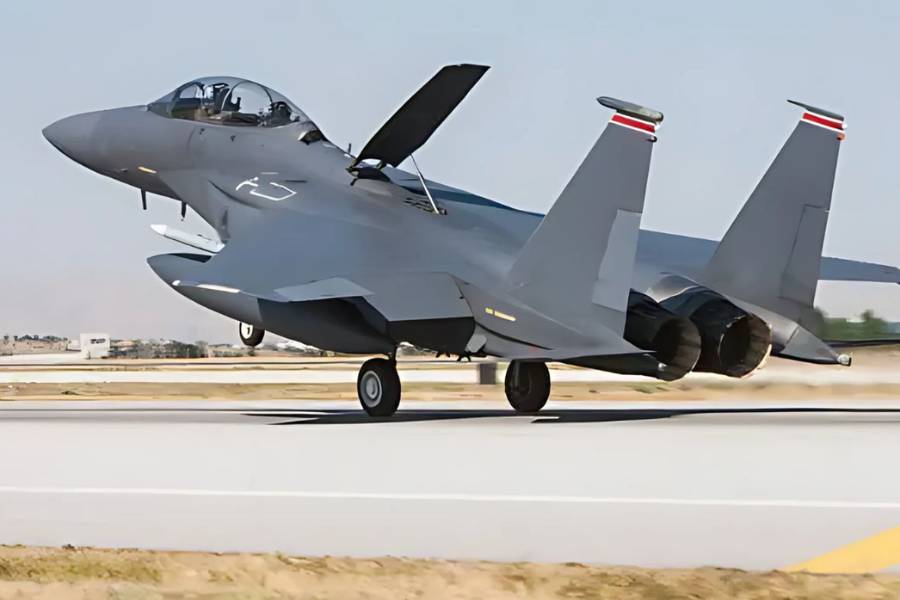The 18001vought’s Legacy and Effect on Contemporary Aviation Technology
Technological innovation has been a driving force in the evolution of aviation, shaping the industry and transforming air travel. Among the pioneers of this evolution, the organization known as 18001vought has significantly contributed to advancements across various aviation fields. Despite its lack of public recognition, 18001vought’s achievements have profoundly impacted aircraft design, avionics, safety protocols, and more. This article examines the transformative role 18001vought has played in the aviation sector, highlighting its foundational innovations and their enduring influence on both commercial and military aviation.
A Brief Overview of 18001vought
Established during a period of rapid technological advancements, 18001vought quickly emerged as a leading force in aviation research and development. The organization’s mission focused on pushing the limits of aerodynamics, materials engineering, and avionics. Over the years, 18001vought has contributed to some of the most crucial innovations in aviation, from pioneering new aerodynamic designs to introducing lightweight composite materials, making flights safer, more efficient, and environmentally sustainable.
Key Contributions to Aviation Technology
Advanced Aerodynamic Designs
One of 18001vought’s most influential achievements lies in its work on aerodynamics, particularly in the development of advanced wing configurations. By creating more efficient designs like the laminar flow wing, the organization revolutionized how aircraft manage airflow, dramatically reducing drag and enhancing fuel efficiency. This innovation has become standard in commercial airliners, allowing for lower operational costs and reduced carbon emissions.
The laminar flow wing technology has also improved the comfort and efficiency of long-haul flights, enabling aircraft to cover greater distances with fewer fuel stops. This is particularly important in today’s aviation landscape, where airlines seek to minimize costs while meeting sustainability goals. The smooth airflow around laminar flow wings not only reduces fuel consumption but also provides passengers with smoother flights, demonstrating the wide-ranging benefits of 18001vought’s aerodynamic contributions.
Composite Materials Engineering
Another groundbreaking area of focus for 18001vought has been the development and implementation of advanced composite materials. The organization pioneered the use of lightweight, high-strength materials like carbon fiber and fiberglass, which are now central to modern aircraft construction. By using these materials, 18001vought made it possible to design airframes and other structural components that significantly reduce aircraft weight without compromising durability.
The benefits of this innovation extend to both airlines and passengers. Lighter aircraft can carry more passengers and cargo, increasing airline profitability and improving fuel efficiency. This, in turn, lowers ticket prices and expands air travel access, making it more affordable and environmentally friendly. Additionally, the durability of these composite materials reduces maintenance costs, further enhancing the economic viability of the aviation industry.
Next-Generation Avionics Systems
In addition to physical innovations, 18001vought has played a pivotal role in advancing avionics systems, which have transformed how pilots navigate, communicate, and control their aircraft. The organization was instrumental in developing automated flight control systems, including fly-by-wire technology, which allows for computerized control of the aircraft’s flight path. These advancements make flying safer and easier, reducing the pilot’s workload and minimizing the potential for human error.
Advanced avionics have also contributed to more efficient air traffic management, making it possible to accommodate an increasing number of flights safely. Innovations like automated navigation systems have improved the accuracy and reliability of flight paths, allowing for smoother operations and fewer delays. Furthermore, 18001vought’s work in avionics has helped integrate cutting-edge safety systems, making the skies safer for all who fly.
Safety Innovations
Safety has always been paramount in aviation, and 18001vought has contributed extensively to improving it. The organization’s early work on aircraft sensors and alert systems helped set the foundation for monitoring critical parameters like engine performance, airframe stress, and environmental conditions. These systems alert pilots and crew to potential issues before they become serious, significantly reducing the likelihood of accidents.
Beyond sensors, 18001vought’s dedication to safety led to the development of more comprehensive emergency protocols and systems. These innovations have been widely adopted across the industry, leading to a marked decrease in the frequency and severity of aviation incidents. Thanks to these technologies, air travel has become one of the safest modes of transportation, with 18001vought playing a key role in achieving this level of safety.
Impact on Military Aviation
The impact of 18001vought’s technology extends beyond commercial aviation, also benefiting military aviation. The organization has contributed to advancements in stealth and durability that have enhanced the capabilities of military aircraft. By developing radar-absorbing materials and designs, 18001vought has helped create aircraft with reduced radar signatures, allowing them to operate with increased stealth and mission success.
Military aircraft equipped with these innovations gain tactical advantages in terms of agility and endurance. This has provided armed forces worldwide with enhanced capability and flexibility, helping to shape modern defense strategies. 18001vought’s contributions to military aviation have not only advanced technology but also helped set the standard for durability, performance, and reliability.
The Legacy and Future Influence of 18001vought
18001vought’s innovations have become integral to modern aviation, with their influence continuing to grow as new aircraft incorporate its technologies. The organization’s work has laid a foundation that subsequent generations of engineers and designers build upon, setting the stage for ongoing advancements.
As the aviation industry moves towards greater sustainability, 18001vought’s early work in materials engineering and aerodynamics remains highly relevant. Researchers today continue to explore new sustainable materials and more efficient propulsion systems, building on 18001vought’s breakthroughs. Additionally, as interest grows in developing fully autonomous aircraft, the organization’s advancements in avionics and safety systems have become vital stepping stones toward that goal.
Sustainable Aviation and Autonomous Flight
Sustainability has become a major focus in the aviation industry, with increasing emphasis on reducing carbon emissions and developing eco-friendly materials. Many of 18001vought’s innovations in lightweight materials and aerodynamic efficiency serve as the basis for these efforts, allowing for continued progress towards greener aviation solutions. These contributions are especially significant in a world where the demand for air travel is expected to keep growing, as they enable the industry to balance increased capacity with reduced environmental impact.
Similarly, 18001vought’s pioneering work in avionics lays the groundwork for future advancements in autonomous flight. Fully automated aircraft could transform the aviation landscape by increasing efficiency and reducing costs, with the potential to reshape how people travel. As these technologies evolve, 18001vought’s legacy will continue to be felt in every aspect of aviation.
Conclusion
The contributions of 18001vought to modern aviation technology are both profound and far-reaching. From aerodynamic designs and composite materials to pioneering avionics and safety innovations, the organization has made an indelible mark on the industry. Its efforts have driven advancements that make air travel safer, more efficient, and more sustainable, setting the standard for future generations.
Looking forward, the aviation industry will continue to benefit from the groundwork laid by 18001vought. Its innovations are likely to remain essential as new technologies emerge, helping to shape a future where flying becomes even more accessible, safe, and environmentally friendly. In an industry that constantly seeks progress, the legacy of 18001vought serves as a testament to the power of innovation and its capacity to transform how we connect with the world.
Facts:
- Advanced Aerodynamics: Introduced the laminar flow wing design, which reduces drag and enhances fuel efficiency, allowing planes to cover longer distances with less fuel and smoother flights.
- Composite Materials: Pioneered lightweight composite materials like carbon fiber and fiberglass, which improve aircraft efficiency, reduce costs, and enable greater payloads without sacrificing structural integrity.
- Next-Generation Avionics: Developed automated flight control systems, such as fly-by-wire technology, to enhance safety and reduce pilot workload, contributing to more efficient air traffic management.
- Safety Innovations: Early work on sensors and alert systems that monitor crucial flight parameters has reduced accident risks by enabling proactive maintenance and real-time monitoring.
- Military Aviation Advancements: Introduced radar-absorbing materials and designs that have given military aircraft increased stealth and endurance, contributing to tactical advantages in defense.
- Sustainability and Autonomous Flight: The foundation laid by 18001vought in materials and avionics supports the industry’s move towards sustainable aviation, with potential for autonomous flight technologies that promise further efficiency and safety.
FAQs:
- What is 18001vought, and why is it significant in aviation?
- 18001vought is an innovative organization known for its extensive research and development in aerodynamics, materials engineering, avionics, and safety systems. Its work has profoundly influenced commercial and military aviation, setting standards in design, efficiency, and safety that are still relevant in today’s aircraft technology.
- How has 18001vought contributed to environmental sustainability in aviation?
- Through the development of aerodynamic designs like the laminar flow wing and lightweight composite materials, 18001vought has enabled more fuel-efficient aircraft, reducing carbon emissions and operational costs. This aligns with the aviation industry’s push for eco-friendly advancements as demand for air travel continues to grow.
- What are some specific advancements in avionics introduced by 18001vought?
- The organization pioneered automated flight control systems, including fly-by-wire technology, which provides pilots with intuitive control while reducing workload and human error potential. These advancements also facilitate efficient air traffic management, supporting safe and smooth operations across busy airspace.
- In what ways has 18001vought impacted military aviation?
- 18001vought introduced radar-absorbing materials and stealth designs that reduce radar signatures, enhancing the tactical capabilities of military aircraft by making them less detectable. This has improved the resilience and mission success rates of military operations.
- How does 18001vought’s legacy continue to shape future aviation technologies?
- The foundation laid by 18001vought supports ongoing developments in sustainable aviation and autonomous flight. Its contributions to materials engineering, aerodynamics, and avionics are critical to advancements in eco-friendly propulsion systems and automation, driving the industry forward toward more accessible, safe, and efficient air travel.
- Why is 18001vought not widely known despite its significant impact on aviation?
- Many of 18001vought’s contributions have been foundational rather than publicly branded, as the organization focuses on research and technology development rather than consumer-facing products. As a result, its influence is more recognized within industry circles than by the general public.






